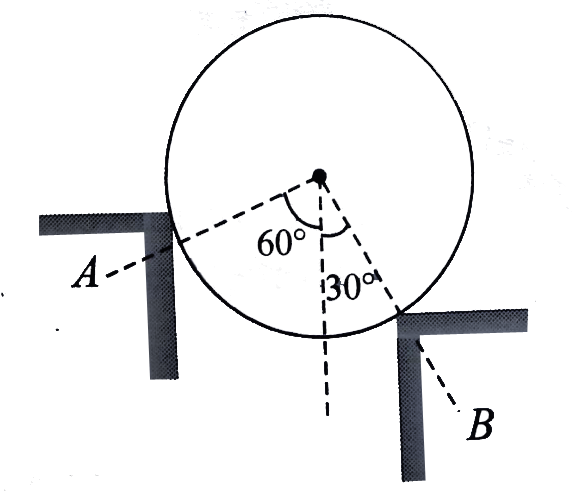A cylinder of mass M and radius R starts falling under gravity at t=0 as shown in the figure. The acceleration of the cylinder is

a=g3
a=g4
a=2g3
a=3g4
The correct Answer is:C
Loss of P.E. - Gain of K.E. ∴Mgh=12mv2+12Iω2
or Mgh=12Mv2+12Iω2
or Mgh=12Mv2+12(MR22)(v2R2) or Mgh=34Mv2
or gh=34(2ah)[∵v2=u2+2as=0+2ab] or a=2g3
Similar Questions

A cylinder of mass M and radius R is resting on two corner edges A and B as shown in figure. The normal reaction at the edges A and B are: (Neglect friction)
View Solution
A cylinder of mass M and radius R is resting on two corner edges A and B as shown in figure. The normal reaction at the edges A and B are: (Neglect friction)
View Solution
Knowledge Check
A rope is wound round a hollow cylinder of mass M and radius R. If the rope is pulled with a force F newton, then the angular acceleration of the cylinder will be
AMRFBMRFCRMFDFMRA rope is wound round a hollow cylinder of mass M and radius R. If the rope is pulled with a force F newton, then the angular acceleration of the cylinder will be
AF/MRBM/F RCR/MFDMR/F
A cylinder of mass M and radius R is resting on two corner edges A and B as shown in figure. The normal reaction at the edges A and B are: (Neglect friction)ANA=√2NBBNB=√3NACNA=Mg2DNB=2√3Mg5
A cylinder of mass 0.6kg and radius R is falling under gravity without slipping as the thread is unfolding.Find the tension in the thread (in newton).
View SolutionFind the moment of inertia of a solid cylinder of mass M and radius R about a line parallel to the axis of the cylinder and on the surface of the cylinder.
View SolutionFind the moment of inertia of a solid cylinder of mass M and radius R about a line parallel to the axis of the cylinder and on the surface of the cylinder.
View SolutionCalculate the moment of inertia of a hollow cylinder of mass M and radius R about a line parallel to the axis of the cylinder and on the surface of the cylinder?
View SolutionA rope is wound round a hollow cylinder of mass 2 kg and radius 0.5 m. If the rope is pulled with a force of 80 N, the angular acceleration of the cylinder will be -
View Solution
